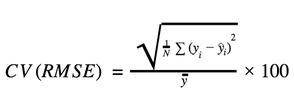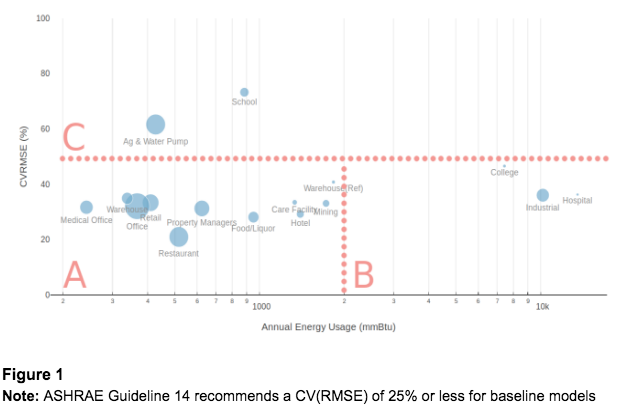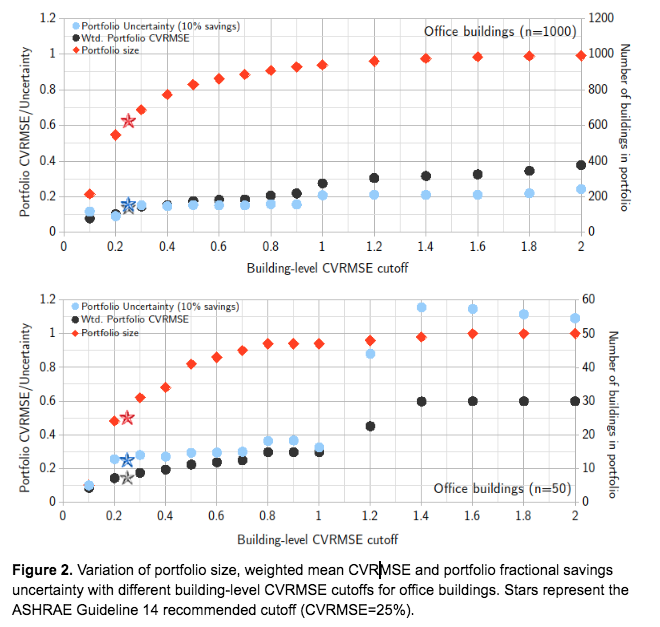Building Qualifications Test Reveals Wide Applicability of CalTRACK Method for Portfolio Analysis3/29/2018 Week Eight CalTRACK Update Today we had an exciting working group meeting focused on Building Qualifications with test results and recommendations. We will be stepping into hourly methods in the upcoming week. Daily and Billing Period Methods Specifications: The final comments on daily and billing period methods have been received. The new, finalized specifications are currently being updated you can track the final on GitHub Issue #82. Participants can review the final specifications and track any issues that fed into the final specification prior to their publication at this site. Building Qualifications: The CalTRACK methods are equipped to normalize for weather’s effect on a building’s energy consumption. The methods become unreliable when a building’s energy consumption patterns are instead correlated with non-weather variables. For example, irrigation pumps are used on an agricultural cycle rather than in response to temperature changes. It is reasonable to expect higher energy consumption during the growing season and an analyst may suggest re-specifying the model to control for these seasonal variations. Without modification, existing billing and daily CalTRACK models cannot accommodate these nuanced cases. For this reason, buildings that are not well-specified by the CalTRACK model should be identified and removed from portfolios because they have significant effects on portfolio uncertainty. This issue can be tracked on GitHub Issue #71.  Building Qualification Metric: To evaluate a building’s qualification status, a metric and a thresholds should be defined. After empirical testing, the recommended metric for CalTRACK 2.0 is CV(RMSE). Justification:
Building Type: Building type can be a useful identifier for aggregators to determine a building’s suitability for a portfolio. In figure 1, the relationship between energy consumption and CV(RMSE) is measured by building type. The size of each dot corresponds with the number of meters per building type. The CalTRACK methods will be most effective for buildings in region A, which have relatively low energy consumption and low CV(RMSE). Buildings in region B are high energy consumers. These buildings often have a single meter tracking consumption for various sub-buildings with mixed uses, which make it difficult to quantify the effect of an energy-efficiency intervention on overall consumption. These buildings will likely require custom M&V and not qualify for CalTRACK. The buildings in region C have high CV(RMSE). The high CV(RMSE) is likely due to correlation in energy usage that is not specified in the model, such as seasonality. These models should not qualify for CalTRACK. CV(RMSE) Threshold for Building Qualification: Due to differences in model quality, portfolio size, and building type between aggregator datasets, it is difficult to establish a universally applicable building-level CV(RMSE) cut-off. The graphs below visualize the relationship between building-level CV(RMSE), portfolio uncertainty, and building attrition. The various graphs show these relationships with different building types and portfolio sizes. While analyzing the graphs, consider that procurers and aggregators tend to be more concerned with portfolio-level uncertainty and building attrition than the building-level CV(RMSE), especially for pay-for-performance programs and Non-Wires Alternatives procurements. The results show that strict building-level thresholds of 25% CV(RMSE) result in low portfolio uncertainty, but significant building attrition. Also, the results vary depending on the portfolio size and building type. From an aggregators perspective, it may be preferable to adopt a less restrictive building-level CV(RMSE) threshold and focus on minimizing building attrition with respect to a strict portfolio uncertainty threshold. Recommendations: We are recommending that the specific building eligibility requirements be generally left to the procurer, who can set the requirements that align best with their goals for a procurement, provided these are specified clearly upfront. CalTRACK can provide general guidelines as follows.
Other Reading Cited in the Working Group Meeting today: Normalized Metered Energy Consumption Draft Guidance CPUC ASHRAE Guideline 14 Homework:
2 Comments
Certainly, the title you provided appears to be a statement regarding the results of a qualifications test for a method called "CalTRACK" in the context of portfolio analysis. The test seems to have demonstrated the broad applicability of the CalTRACK method. If you need further information or assistance related to this topic, please feel free to ask.
Reply
Leave a Reply. |
The purpose of this blog is to provide a high-level overview of CalTrack progress.
For a deeper understanding or to provide input on technical aspects of CalTrack, refer to the GitHub issues page (https://github.com/CalTRACK-2/caltrack/issues). Recordings
2019 CalTRACK Kick Off:
CalTRACK 2.0 July 19, 2018 June 28, 2018 June 7, 2018 May 24, 2018 May 3, 2018 April 12, 2018 March 29, 2018 March 15, 2018 March 1, 2018 February 15, 2018 February 1, 2018 Archives
March 2024
|



 RSS Feed
RSS Feed
